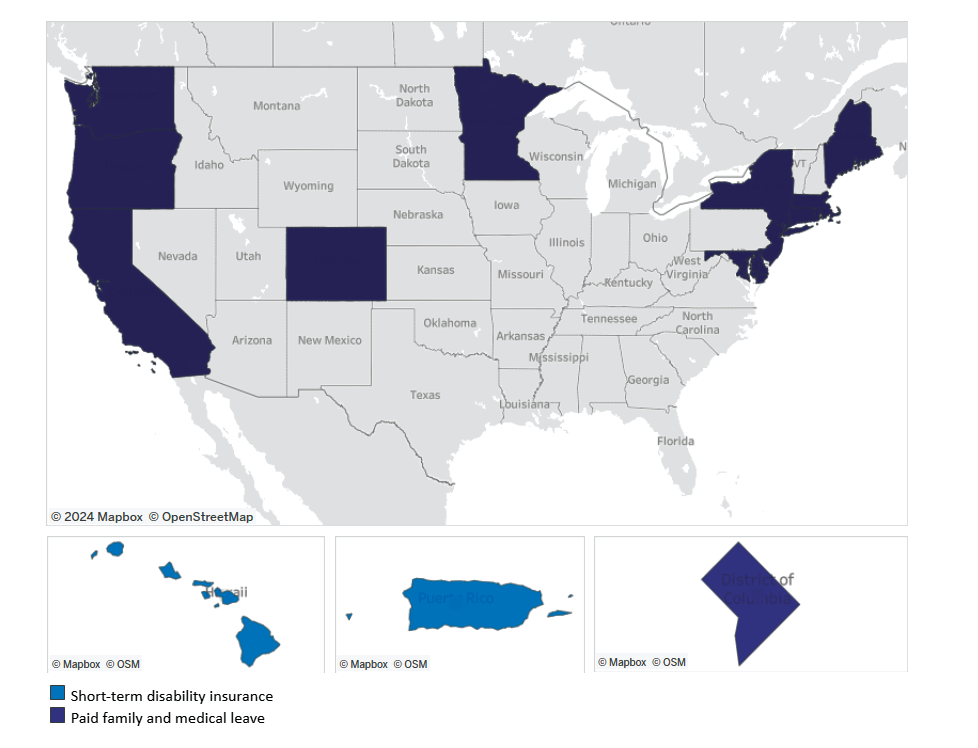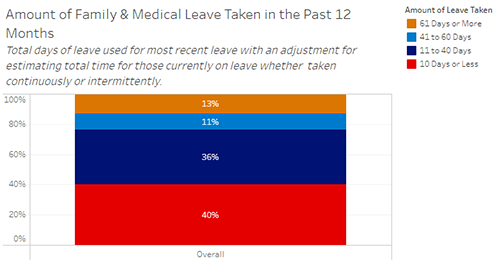What Are the Main Types of Paid Leave?

Paid family and medical leave
Paid family and medical leave refers to policies that enable workers to receive wage replacement when they take extended time off from work for qualifying reasons, such as bonding with a new child, recovering from their own serious health condition or caring for a loved one with a serious health condition. While many workers are entitled to take unpaid leave under the Family and Medical Leave Act (FMLA), there is currently no federal law providing or guaranteeing access to paid family and medical leave for workers in the private sector. However, some states have their own paid leave programs and requirements.
Paid sick time
Paid sick time refers to policies that provide regular wages when workers need to take shorter leaves due to their own or a family member’s routine illness like a cold or the flu, or to access medical care – including preventative care – for themselves or a family member. There is currently no federal law guaranteeing access to paid sick leave, although many states and localities have passed paid sick leave laws.
Paid time off
Paid time off (often referred to as “PTO”) policies provide paid leave that can be used for a wide range of different uses including emergencies, illnesses, sudden necessities, planned vacations, etc. Often paid time off is offered in place of separate leave policies for vacation, sick time, personal days, and other forms of paid leave intended for specific purposes. There are no federal laws regarding paid time off, and few state or local laws related to this policy.
Unpaid time off
Unpaid time off does not provide compensation, but typically includes job protection and continuation of workplace benefits such as health insurance. The Family and Medical Leave Act (FMLA) is a federal law that guarantees job-protected, unpaid time off to eligible workers for qualifying reasons, such as bonding with a new child, recovering from one’s own serious illness or caring for a seriously ill loved one. Some states have additional unpaid time off protections that go beyond the federal FMLA.
Paid Family and Medical Leave: The Momentum is Growing
Click to see the map in English or Spanish. Haga clic para ver el mapa en inglés o español.
Thirteen states and the District of Columbia have laws that create paid family and medical leave programs for eligible workers. Additionally, Hawaii has a law providing paid temporary disability leave to eligible workers, while Puerto Rico has laws providing paid temporary disability and maternity leave to eligible workers. Three states, New Hampshire, Vermont, and Virginia, have voluntary programs that allow some workers and employers to purchase private family or medical leave insurance.
This interactive map provides information on the current landscape of state paid family and medical leave laws across the country, with links to the state agencies where workers can learn more about their rights and apply for benefits.
Paid Sick Leave
As of December 2024, 18 states and the District of Columbia have enacted paid sick leave laws that require covered private employers to provide paid sick leave from work to their eligible employees to attend to their own health needs or those of a family member.
Paid Leave: By the Numbers
Explore the interactives:
Explore the Microsimulation Model on Worker Leave
- Learn more about the open-source simulation tool that can be used by researchers and policy makers to estimate the effects of worker leave scenarios and policy options.
- Read examples of state paid family and medical leave policy analyses performed using the microsimulation tool.
- Hawaii (PDF)
- Maine (PDF)
- Michigan (PDF)
- New Mexico (PDF)
- Pennsylvania (PDF)
Additional Resources





